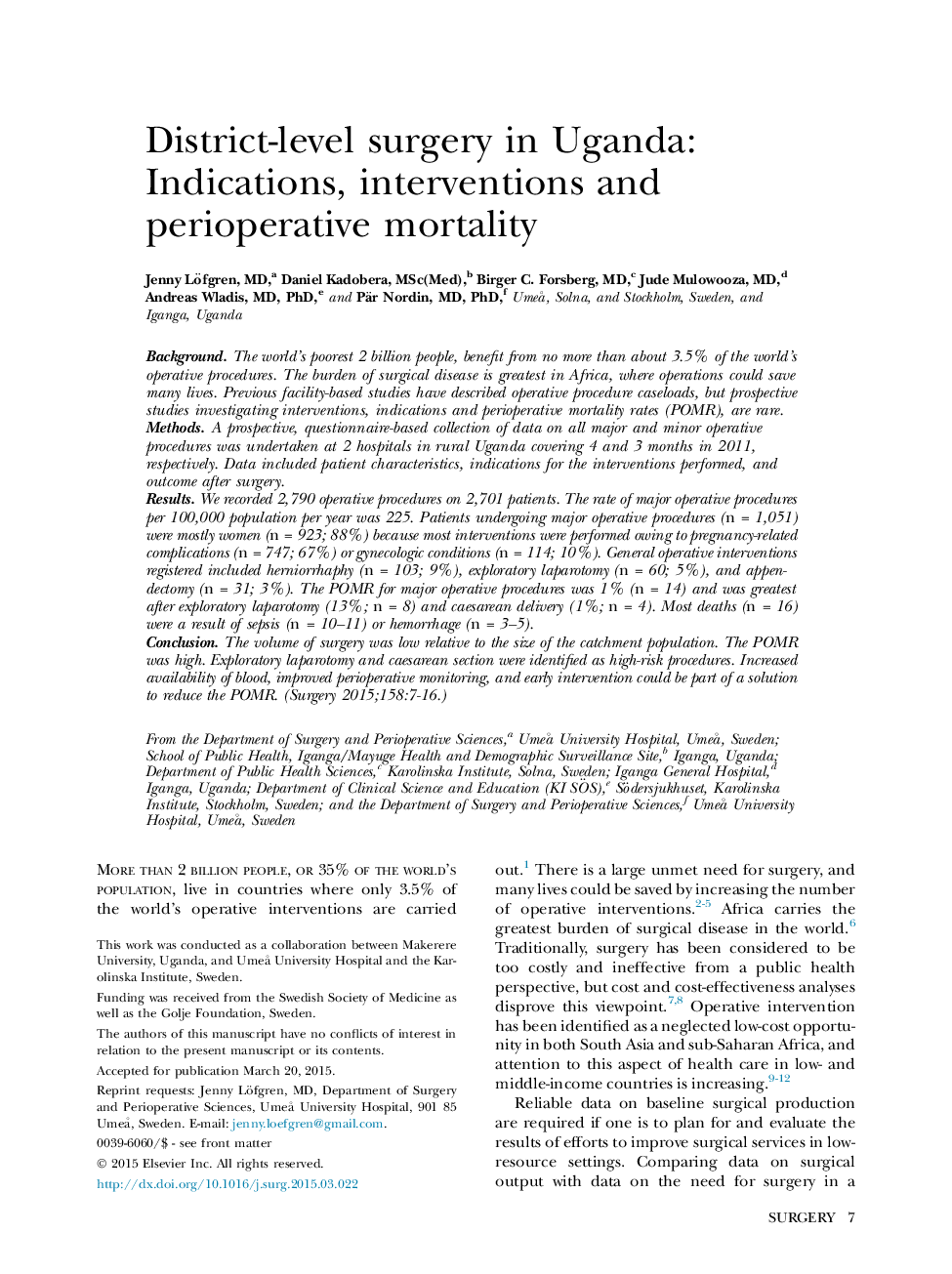| Article ID | Journal | Published Year | Pages | File Type |
|---|---|---|---|---|
| 6255285 | Surgery | 2015 | 10 Pages |
BackgroundThe world's poorest 2 billion people, benefit from no more than about 3.5% of the world's operative procedures. The burden of surgical disease is greatest in Africa, where operations could save many lives. Previous facility-based studies have described operative procedure caseloads, but prospective studies investigating interventions, indications and perioperative mortality rates (POMR), are rare.MethodsA prospective, questionnaire-based collection of data on all major and minor operative procedures was undertaken at 2 hospitals in rural Uganda covering 4 and 3 months in 2011, respectively. Data included patient characteristics, indications for the interventions performed, and outcome after surgery.ResultsWe recorded 2,790 operative procedures on 2,701 patients. The rate of major operative procedures per 100,000 population per year was 225. Patients undergoing major operative procedures (n = 1,051) were mostly women (n = 923; 88%) because most interventions were performed owing to pregnancy-related complications (n = 747; 67%) or gynecologic conditions (n = 114; 10%). General operative interventions registered included herniorrhaphy (n = 103; 9%), exploratory laparotomy (n = 60; 5%), and appendectomy (n = 31; 3%). The POMR for major operative procedures was 1% (n = 14) and was greatest after exploratory laparotomy (13%; n = 8) and caesarean delivery (1%; n = 4). Most deaths (n = 16) were a result of sepsis (n = 10-11) or hemorrhage (n = 3-5).ConclusionThe volume of surgery was low relative to the size of the catchment population. The POMR was high. Exploratory laparotomy and caesarean section were identified as high-risk procedures. Increased availability of blood, improved perioperative monitoring, and early intervention could be part of a solution to reduce the POMR.
